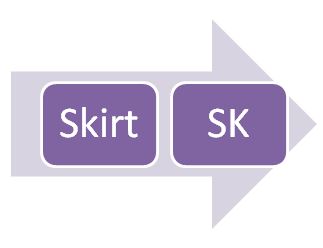2. What is coding of data?
Any system will need to have data collected, entered and stored.
One method of storing data is to assign codes to it. This usually means shortening the original data in an agreed manner. The agreement is between the users of the system. This coding scheme could be part of the training of how to use the system, and it could also be documented within the system for new users.
If the coding is completely obvious then there is no such need for formal documentation. For example if a field called 'Gender' has only two values 'M' and 'F'. It should be obvious from the field name that this refers to Male and Female.
Example 1
Original data: Monday; Tuesday; Wednesday; Thursday; Friday
Coded data: Mon; Tues; Wed; Thurs; Fri
Example 2
Original data: Xtra Large; Large; Medium; Small
Coded data: XL; L; M; S
Example 3
The above codes are fairly easy for anyone to recognise and understand. Some codes however are more complicated. What do you think the following codes might represent?
RG935LR
CV183TP
The above examples could be postcodes. They represent a street name, a particular part of the street and the town where the street is located.
Example 4
How about:
SK12BN
TR14GN
Let's propose that these are codes for clothes in an online shop.
These might be a little bit more difficult because the code is made up from different representative parts. Let's have a closer look.
The first part represents a piece of clothing, so 'SK' represented 'Skirt' and 'TR' represented 'Trousers'
The middle part of the code is the dress size.
The final part of the code represented a colour, so 'BN' represented 'Brown' and 'GN' represented 'Green'.
You should be able to see from that information that the first code is a size 12 brown skirt. What piece of clothing would the second code represent?
Challenge see if you can find out one extra fact on this topic that we haven't already told you
Click on this link: Coding of Data

